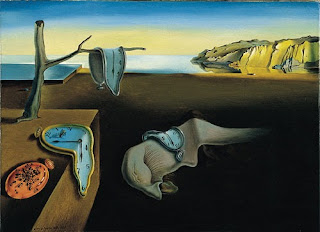When Albert Einstein’s good friend Michele Besso died in 1955, just a few weeks before Einstein’s own death, Einstein wrote a letter to Besso’s family in which he put forward a scientist’s consolation: “This is not important. For us who are convinced physicists, the distinction between past, present, and future is only an illusion, however persistent.”
The idea that time is an illusion is an old one, predating any Times Square ball drop or champagne celebrations. It reaches back to the days of Heraclitus and Parmenides, pre-Socratic thinkers who are staples of introductory philosophy courses. Heraclitus argued that the primary feature of the universe is that it is always changing. Parmenides, foreshadowing Einstein, countered by suggesting that there was no such thing as change. Put into modern language, Parmenides believed the universe is the set of all moments at once. The entire history of the universe simply is.
Today we would call this the “eternalist” or “block universe” view—thinking of space and time together as a single four-dimensional collection of events, rather than a three-dimensional world that evolves over time. Besides Parmenides and Einstein, this picture is shared by the Tralfamadorians, an alien race who appear in Kurt Vonnegut’s novel Slaughterhouse-Five. To a being from Tralfamadore, visiting the past is no harder than walking down the street.
This “timeless” view of the universe goes against our usual thinking. We perceive our lives as unfolding. But it has adherents even in contemporary physics. The laws of nature, as we currently understand them, treat all moments as equally real. No one is picked out as special; the laws simply say how any moment relates to the previous one and to the next.
Perhaps the most energetic and persistent advocate of the claim that time is illusory is the British physicist Julian Barbour. Impressively, Barbour has managed to do interesting research in physics for decades now without any academic position, publishing dozens of papers in respected journals. He has supported himself in part by translating technical papers from Russian to English—in his spare time, tirelessly investigating the idea that time does not exist, constructing theoretical models of classical and quantum gravity in which time plays no fundamental role.
We have to be a little careful about what we mean by “time does not exist.” Even Parmenides or Barbour would acknowledge the existence of clocks, or of the concept of being late. At issue is whether each subsequent moment is brought into existence from the previous moment by the passage of time. Think of a movie, back in the days when most movies were projected from actual reels of film. You could watch the movie, see what happened and talk sensibly about how long the whole thing lasted. But you could also sneak into the projection room, assemble the reels of the film, and look at them all at once. The anti-time perspective says that the best way to think about the universe is, similarly, as a collection of the frames.
There has, predictably, been some pushback. Tim Maudlin, a philosopher, and Lee Smolin, a physicist, have argued vociferously that time is real, and that the passage of time plays what we might call a generative role: It indeed brings the future into existence. They think of time as an active player rather than a mere bookkeeping device.
Both researchers have been developing new mathematical tools and physical models to buttress their views. Maudlin’s novel approach focuses on the topology of spacetime itself—how different points in the universe are sewn together. Whereas traditional topology uses regions of space as fundamental building blocks, Maudlin takes worldlines (paths of particles through time) as the most basic object. From there, time evolution seems like a central feature of physics.


Post a Comment